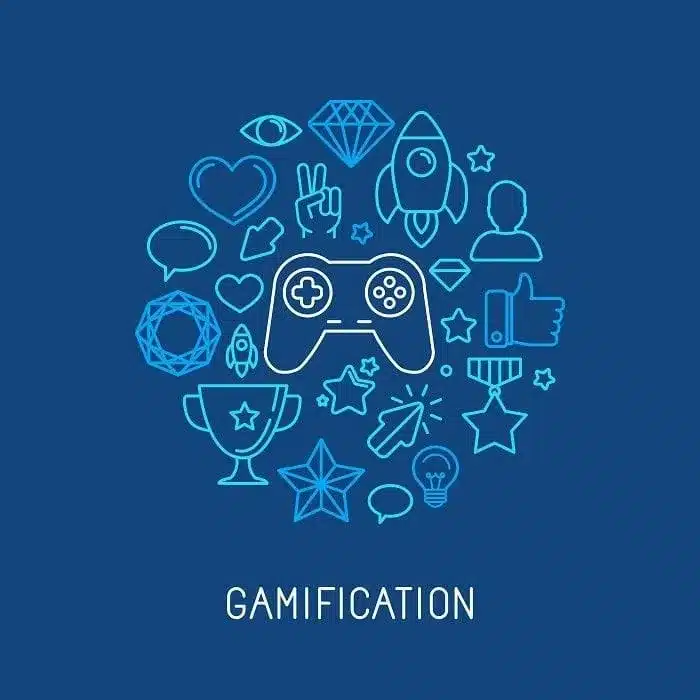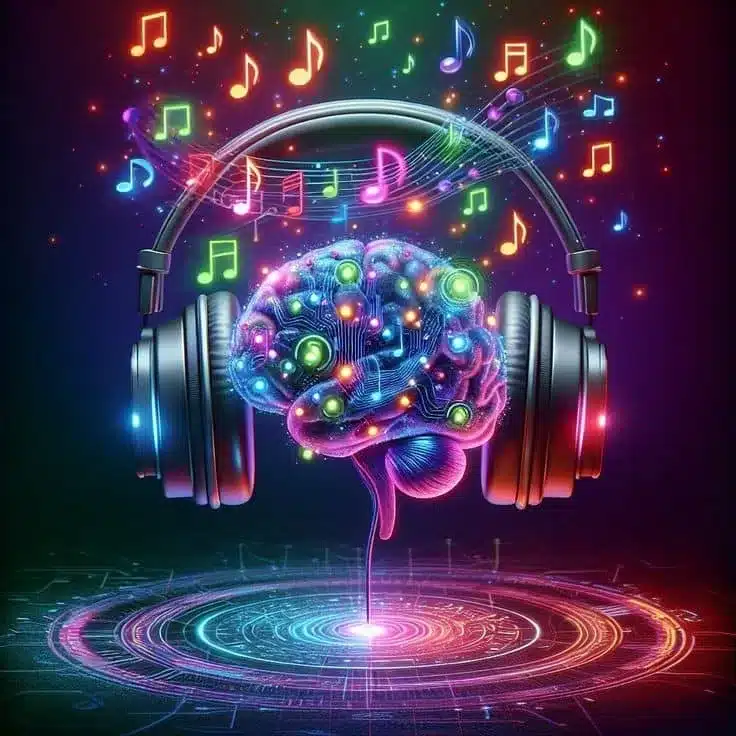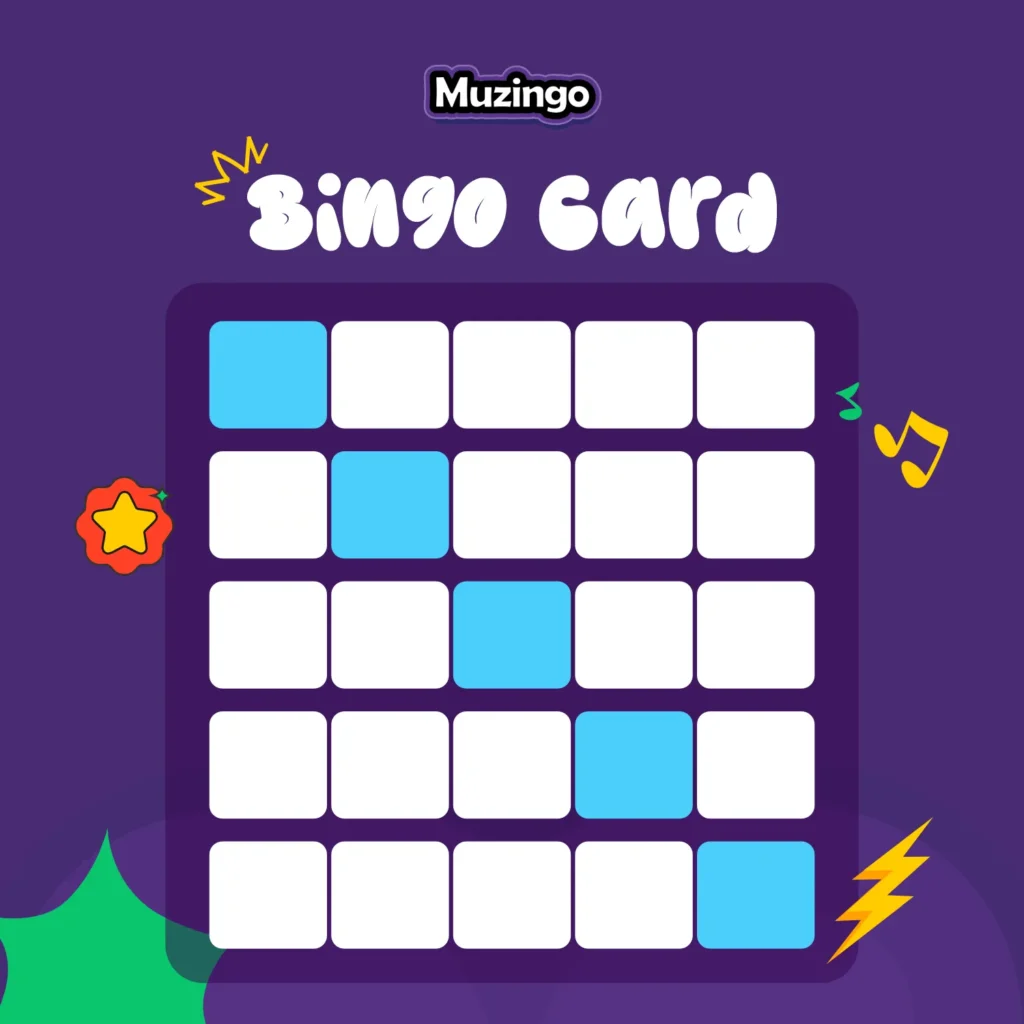
Image by Fiona Palmer on Pinterest
When I was young, every Christmas, my friends and I would come together to celebrate the season’s joy by hosting a friendly event.
We would set up five chairs for six players, arranged in a circle. As the music played, we danced around the chairs, laughter and screams of joy echoing in the air.
Then, suddenly, the music stops. The scramble began; whoever did not find a chair to sit was out of the game.
After each round, a chair was removed, making the game more exciting and competitive!
In the end, two players and one chair remained. As the final song played, the player danced with anticipation, knowing that the first to sit would be crowned the winner.
I am sharing this childhood memory because it captures the spirit of music gamification, even though we did not call it that then.
Today, thanks to the evolution of technology, amplified music platforms are intentionally weaving game-like elements into how we interact with music, creating new, exciting ways to experience sound.
In this post, we’ll dive into what music gamification really means, why it matters, and how qualified music platforms are changing the way we engage with music forever.
Key Takeaways
- Gamification is transforming music from passive listening into interactive, competitive, and goal driven experiences.
- Platforms like Muzingo are pioneering a future where becomes a blend of fun, community and discovery.
- The future of music is immersive and social (think about the evolution of VR concerts, dynamic playlists, and AI powered music games)
What is Music Gamification?
Music gamification can simply be defined as the act of adding game-like elements into music to enhance users’ engagement and motivation.
This was demonstrated in the short story I shared earlier with you.
Understanding Gamification
In clear words, gamification is the process of applying game-like elements, such as leaderboards, badges, challenges, and rewards, into activities that are not traditionally games.
The goal is to make these activities more engaging, motivating and fun.
Below are a few real-world examples to better help you understand this concept.
Duolingo (Learning a New Language)
- Gamified Elements include Points, streaks, progress bars, badges and daily challenges.
- How do these elements impact users’ experiences? Learning a new language can feel tedious and complicated.
By incorporating these elements, Duolingo turns language learning into a fun and addictive experience. This signifies how gamification is implemented in education.
Fitbit (Fitness Tracker)
- Gamified Elements include badges, achievements, leaderboards and challenges.
- How it works: Fitbit uses gamification to encourage daily activity by giving users badges for reaching goals (e.g., walking 10,000 steps in a day) and allows them to compete with friends through challenges.
How do these elements impact users’ experiences? It helps them increase physical activity by turning exercise into a fun, competitive activity.
Linkedin (Professional Networking)
- Gamified elements include profile strength meter, and badges for skills and achievements.
- How it works: Linkedin encourages users to complete their profiles, network and stay active on the platform.
Gamification meets Music: A New Era
One beautiful thing is music is also not left out in this transformation.
Gamification and music can seem like an unexpected pair, but I am here to show you that they can increasingly work hand in hand to reshape how you engage with sound.
Gamification, at its core, uses game design elements (like points, levels, rewards, and competition) in non-game contexts. When applied to music, it enhances interaction, motivation, and even joy.
This can happen in two ways; let me break it down.
Gamifying Music consumption

Image by Arrhenius on Pinterest
All you have probably known is that music is only for passive listening. They are sounds to vibe to as you lay in bed to sleep, during your morning workout sessions or as you read through your favourite book.
However, beyond this, music can be so much more.
You can now interact with music in a way that is fun, playful, competitive or goal-driven, transforming passive listening into an active experience.
- Song Discovery Rewards: Some platforms award points or badges for exploring new tracks or playlists. This helps you to feel a sense of achievement. After all, a win is a win! No matter how minute.
- Friendly Competition: Apps like Muzingo makes music social and fun by turning it into a bingo game.
- Leaderboards and Rankings: You can climb rankings and win music bingo games based on your music knowledge. This helps create a healthy rivalry among you, your friends, and other music lovers.
Gamifying Music Learning & Creation
Remember the last time you tried to learn something new? It was tedious and challenging to keep up with.
These feelings also arise when you try to learn to play an instrument for the first time or even compose a piece of music.
Take Your Game Nights to the Next Level
Muzingo is a fun game where players listen to music tracks and match them to bingo cards — competing to win prizes with friends.
Play Muzingo FreeNo Card Required
These challenges may have you thinking, “Perhaps I do not have what it takes to learn so and so…”
But what if this is not the case at all? What if all you need is a seamless and easy learning experience?
Gamification can remove the pressure from learning a new musical instrument, adding a sense of play and making it more enjoyable.
Listed below are a few examples of gamification platforms:
- Yousician: This app transforms instrument practice into a video game. Learners earn points, unlock levels, and get instant feedback, making practice more addictive and enjoyable.
- Melodics: Helps users learn how to produce beats, play piano or drums, and rewards progress with daily goals and achievement streaks.
It is fantastic to see that music isn’t just something you hear anymore; it’s something you can also play with.
Gamification is unlocking a new way to connect with music, whether you’re competing with friends on Muzingo, learning piano through a challenge or staying motivated with digital rewards.
And in a fast-paced world where our attention spans are shorter and engagement matters more than ever, music gamification might be the remix we have all been waiting for.
The Future of Music and Gamification
As technology continues to evolve, so does the way you and I experience music.
Gamification is now redefining how the next generation listens, learns, and connects through sound.
This transformation is exciting! The future of music is not only interactive and immersive but also deeply social, and here is what it might look like:
- VR Concerts and Immersive Music Worlds: Virtual Reality (VR) is making it possible to attend concerts from your living room. But what if these concerts were gamified?
Fans could earn points for dancing with their avatars, answering trivia during set breaks, or unlocking exclusive backstage access through in-game achievements. Companies like Wave and Meta are already exploring these frontiers.
- Interactive Music Game: Music listening is becoming more communal again, not just about headphones and playlists, but about shared experiences.
Interactive music games like Muzingo are tapping into this trend by making music competitive, collaborative, and playful.
As Gen Z and Alpha grow up on platforms like Roblox and TikTok, they’re naturally drawn to experiences that blend gaming with music, and Muzingo is positioned right in that sweet spot.
It’s evident that players do not just listen to songs; they race to recognise them. Playlists are now becoming game boards, and music knowledge is now a social currency.
- Customizable, dynamic Playlists: The playlists of the future won’t be static. Instead, they’ll respond to your actions:
Did you win a challenge? You unlock a hidden track. Did you complete a genre quest? You level up to explore new musical regions.
This transforms you from a passive listener into an active participant.
One unique thing about gamification is that it makes music fun again. Gamified music platform opens up new possibilities for joy. It adds a layer of interaction that deepens your love for sound.
Muzingo is, no doubt, one of the platforms leading the way, turning music into a social, competitive and rewarding experience that brings you and your loved ones together.
CTA: Are you ready to experience music like never before? Unleash the joy of music gamification by visiting Muzingo today!
Frequently Asked Questions
- What is music gamification?
Music gamification refers to the integration of game-like elements such as points, levels, challenges, and rewards into music experiences thereby turning what was once a passive activity into an interactive and enjoyable experience.
- How does music gamification enhance user engagement?
Gamification increases engagement by making music experiences more immersive and interactive. Whether it’s competing in music quizzes, earning badges for discovering new songs, or leveling up through practice sessions, users are motivated to return, interact, and progress.
- Are there apps that use gamification in music?
Yes! Platforms like Yousician and Melodics gamify music learning, while Muzingo adds gamified fun to music discovery through social bingo-style gameplay. These platforms use leaderboards, challenges, and achievements to make music more enjoyable and rewarding.
- Is gamified music only for gamers or musicians?
Not at all. Music gamification is for everyone from casual listeners to aspiring musicians. It’s designed to make music fun, social, and interactive, regardless of your skill level or background.
- What is Muzingo, and how does it fit into music gamification?
Muzingo is an interactive music game that brings people together through music-themed bingo. It gamifies song recognition and playlist interaction, creating a competitive and social music experience ideal for parties, team bonding, or virtual hangouts.


